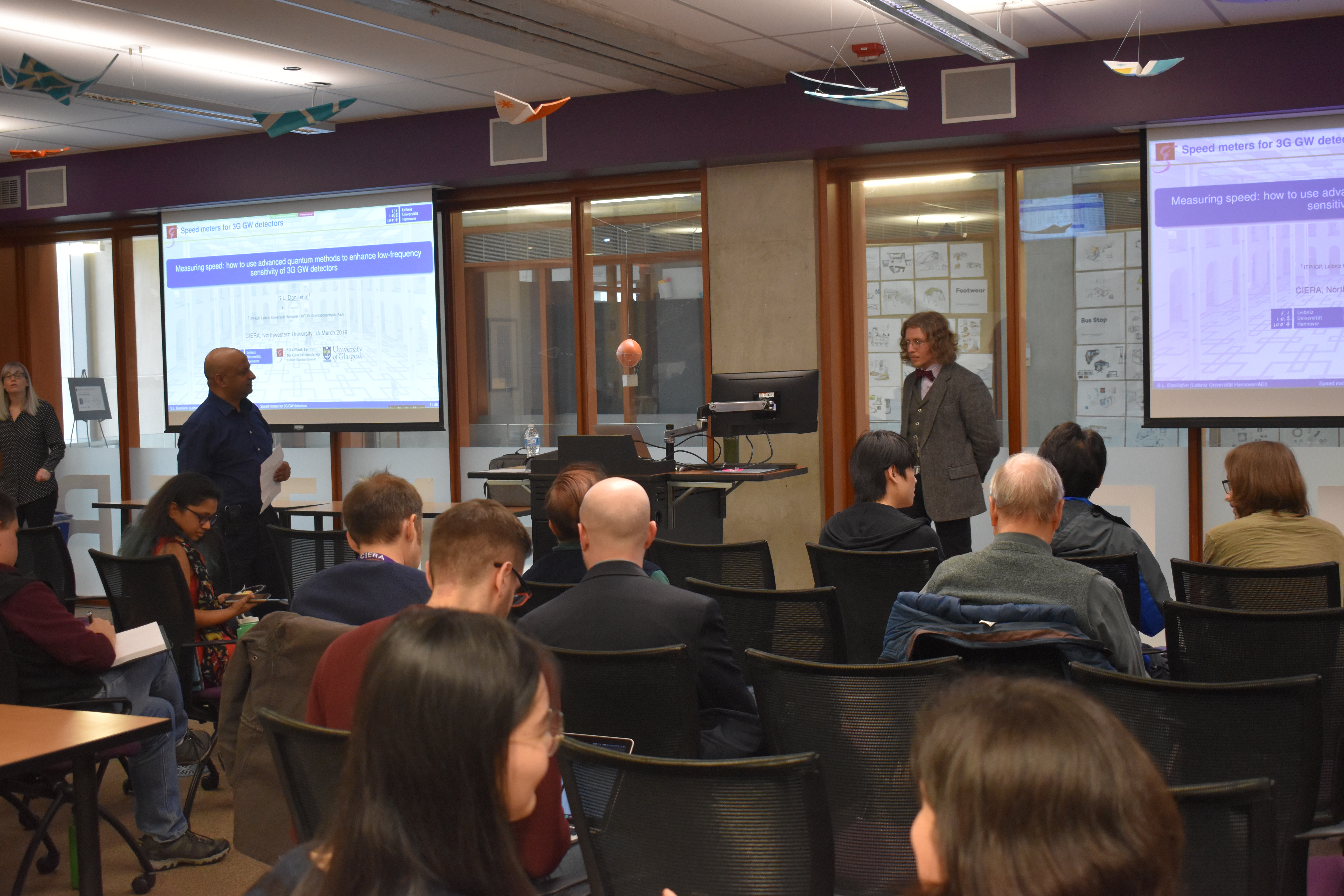
Recent detections of gravitational waves (GW) from colliding black hole binaries by LIGO and Virgo interferometers have not only ushered in the era of gravitational wave astronomy, but they have also shown the importance of enhancing the sensitivity of GW instruments.
Chair of the Quantum Noise Workgroup at LIGO and leader of the theory groups Quantum Optomechanics at the International Institutes of Theoretical Physics and Gravitational Physics, Dr. Stefan Danilishin presented his talk, “Measuring Speed: How to use advanced quantum methods to enhance the sensitivity of future gravitational wave detectors”, through CIERA’s Interdisciplinary Colloquium series on March 15.
Jointly presented by CIERA and the Department of Electrical and Computer Engineering, nearly 30 people attended the talk hosted by Selim Shahriar. Danilishin spoke about how to use advanced quantum methods to enhance the sensitivity of future gravitational wave detectors in the low frequency band at 1-30 Hz. This frequency contains the majority of the GW emission spectrum of compact binary sources.
In this range of frequencies, the dominant fundamental noise source of the GW interferometers is quantum back-action produced by random fluctuations of light intensity.
Danilishin discussed state of the art interferometric detection of GWs and how low frequency components of quantum noise can be suppressed by turning the detector into a quantum non-demolition speed measuring device. He explained the possible realizations of speed meters, as well as the pros and cons of these schemes.

